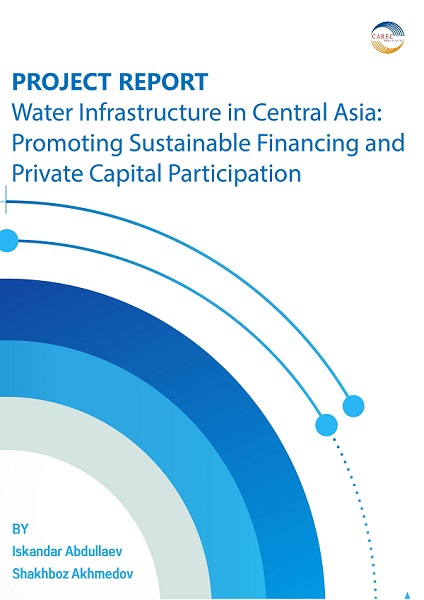Project Report on Water Infrastructure in Central Asia: Promoting Sustainable Financing and Private Capital Participation
Investing in the water sector means investing in economic growth and sustainability. Water is part of every aspect of the economy, particularly in Central Asia—a region heavily dependent on water-intensive agriculture and energy products. Underinvested, undervalued, and underpriced, water becomes a crucial troublemaker across social, economic, and environmental dimensions. While unsafe water and sanitation can cause illnesses by enabling their easy proliferation through boundaries, droughts and floods provoke natural disasters that have broad implications for water, food, energy, and, above all, human security, among other factors. These, in turn, can unlock social and economic disruptions.
Ranking foremost of the countries vulnerable to the impact of climate change (CAREC Institute, 2020), Central Asian countries must allocate substantial investment to dilapidated and new water infrastructures without delay by integrating the latest technology and capacity solutions to increase efficiency in water consumption. The need for investment in the region’s water is at an unprecedented level, which is becoming increasingly urgent by the impact of climate change.
Private capital cannot fully substitute government or existing funding for the water sector, although it can help to some extent to close the existing and emerging gaps in water financing. Considering the region’s positive demographic development, the economic growth ambitions of the countries, and the growing impact of climate-induced events, diversification of investments into the water sector must go beyond private capital participation. The analysis in this report reviews the current state of financing and charts potential options for governments to consider in diversifying funding sources for water resources in Central Asian countries.
The countries of the region face the following obstacles:
• The rehabilitation of dilapidated infrastructure and the reconfiguration of water systems into individualized agricultural land units present infrastructure challenges for Central Asian countries. Currently, up to 60 percent of the water reserved for irrigated agriculture is lost before it reaches the irrigated plots.
• The mostly public, state-owned, and highly regulated nature of the water sector can be risky and therefore unappealing for FDI, private financing, and other types of funding.
• The water infrastructure built for large-scale collective farming has become difficult to manage and largely inappropriate for modern agriculture production; the quality of water services is in constant decline, putting food security and agricultural production at risk.
Policy recommendations:
• Governments should create a favorable regulatory framework for private sector players to manage investment risks and unlock value by engaging effectively with government agencies, regulators, communities, and other stakeholders in decision-making and their execution.
• Governments in Central Asia should change their agriculture policies; increasingly market-oriented, deregulated policies may encourage private companies to invest in water services. For the water supply companies, operating and maintaining the irrigation infrastructure may assist with water sector financing.
• It is an age of transparency. Revealing the necessary data and information through openness and a radical engagement with society and businesses of different scale has significant value. In fact, the long-term performance and sustainability of infrastructure are intrinsically connected with how well stakeholders integrate and cooperate with each other, both across the relevant government agencies and others.
• Capacity building and technology integration. These are key areas for improving both the operation and maintenance (O&M) of the water infrastructure and the provision of professional water services. Moreover, the attraction of private partnerships could bring about more technological innovation in the water sector. Digital solutions and the wider application of new approaches in the water sector will increase the efficiency of water resources development and use.
